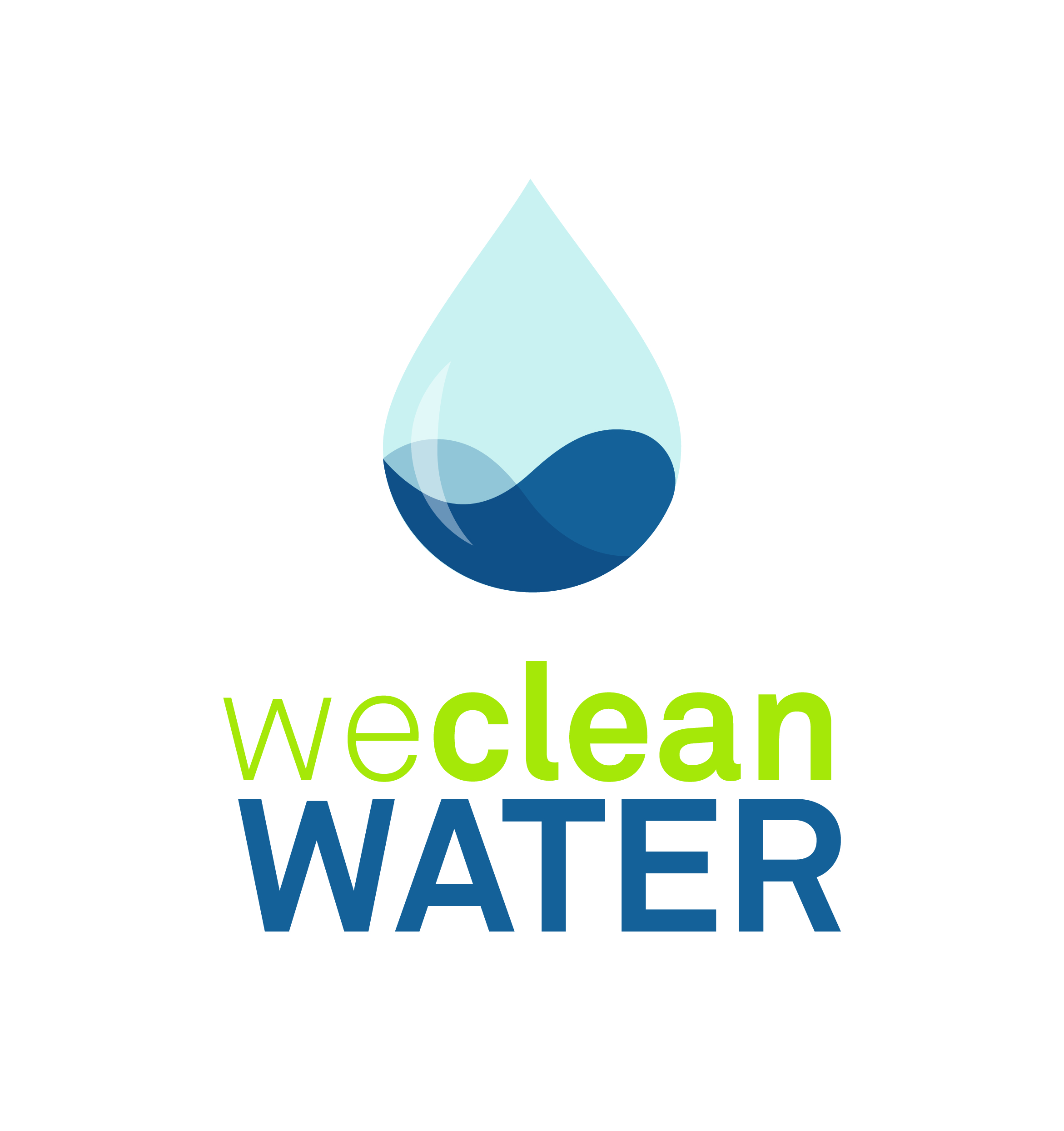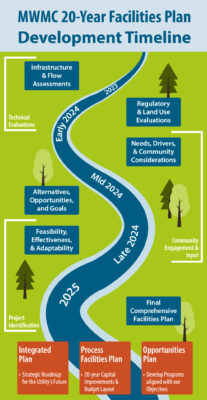Facilities Planning
As the public wastewater utility for Eugene and Springfield, the MWMC has a 24/7 responsibility to ensure that all of the community’s wastewater cleaned and the Willamette River is protected. In order to clean those billions of gallons every year, our engineers and planning staff carefully consider what challenges and needs the future may hold and how we can prepare to handle them.
20 Year Facilities Plan


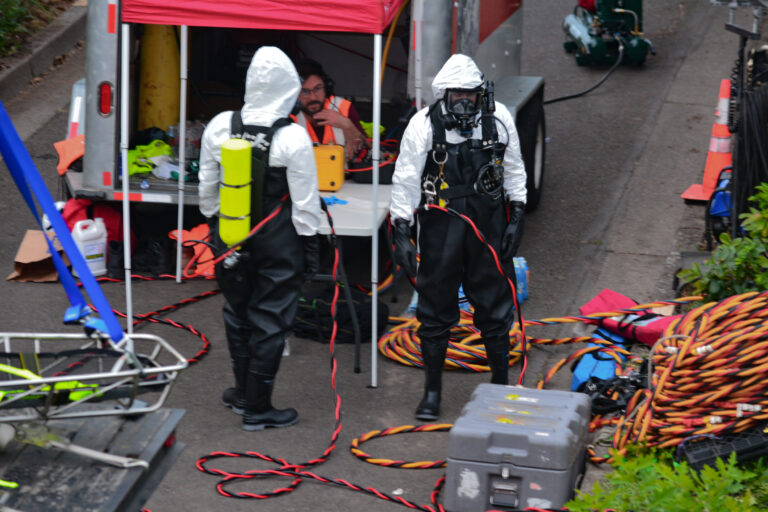
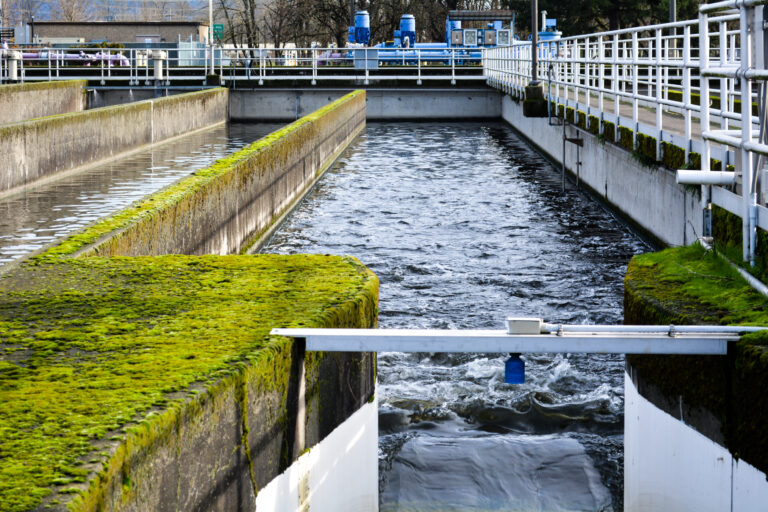

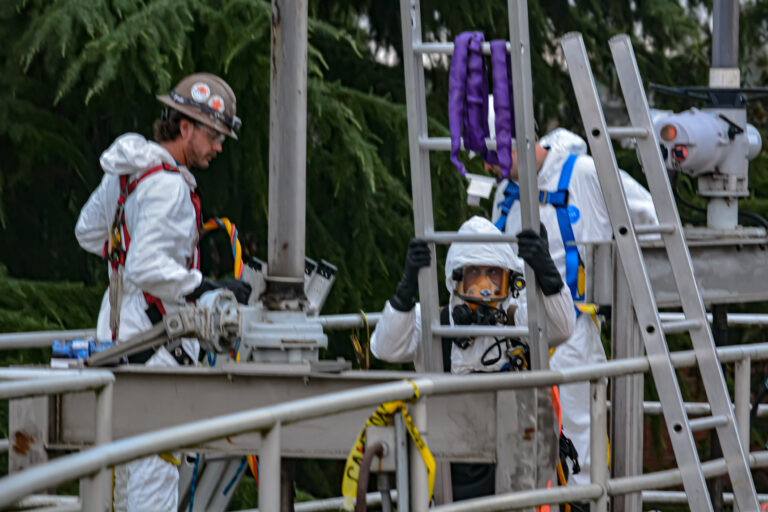
The MWMC Wastewater Comprehensive Facilities Plan identifies and addresses wastewater system improvements needed to continue safe and reliable service to the area for the next 20 plus years. The facilities plan will provide a clear understanding of the capital improvements needed for the wastewater system and how they will be financed.
Planning and building wastewater infrastructure is extremely complex. Upgrades and new facilities can take a decade or more to go from concept to construction. Fortunately, the MWMC is in a favorable position with our current facilities, and we are poised to bring innovative and cost-effective solutions to our community in the future.
Beginning in the mid 1970’s local officials met with citizens and acted in a unison for a new regional treatment facility to provide for the wastewater disposal needs of the growing Eugene-Springfield area. To receive federal funds for new construction, the State of Oregon designated the MWMC special service unit boundary, and the Lane Council of Government approved funding for CH2M HILL to complete a waste treatment alternatives study analysis in 1976. An evaluation of treatment options for secondary treatment among other requirements established the initial regional projections, requirements, and projects needed to serve the community through 2005. The final product of this effort is the 208 Plan completed in 1977.
A 208 Plan refers to Section 208 of the Clean Water Act of 1972. Section 208 contains funding requirements for new construction of Best Practical Waste Treatment Technology (BPWTT). In 1977 “practical” was secondary treatment, and the regulation includes many documentation requirements. Among those requirements are a 20-year treatment needs identification and alternate analysis, Inflow and Infiltration (I&I) evaluation, non-point source identification, a residual disposal process, and a breakdown of the financial planning for the priority list of capital projects to meet effluent permit limits.
In 1979 construction began on the MWMC regional wastewater treatment facility. The new facility came online in 1984 and in the mid 1990’s MWMC initiated a study to prepare a Master Plan to determine how the treatment processes and facilities were performing relative to the original capacity and performance expectations. The Master Plan was completed and recommended further evaluations to assess the facilities’ capacity to treat peak wet weather flows and to adequately process biosolids. In late 1997, the MWMC initiated a project to develop a comprehensive Wet Weather Flow Management Plan (WWFMP).
In 2004, the two volume MWMC Facilities Plan was published after review by the Oregon Department of Environmental Quality (DEQ). CH2M HILL was the contracted consultant. It was a sizeable project that enlisted the services of nine CH2M staff and a dozen Eugene and Springfield staff and took over a year to complete.
In 2014, ten years after the 2004 Facilities Plan was completed, MWMC staff conducted a mid-cycle evaluation of emerging data and regulations, resulting in a Partial Facilities Plan Update (PFPU). While not a comprehensive planning document, the information developed in the PFPU was intended to provide a technical basis for interim planning decisions as the MWMC approached NPDES permit renewal.
In 2022, DEQ completed the renewal process for the MWMC NPDES permit. With the new permit in place, the MWMC is set to begin development of a practical, modern wastewater planning document based on the MWMC Strategic Plan, NPDES regulatory requirements, and the Eugene-Springfield regional community goals and forecasted needs.
There are many reasons to engage in proactive facilities planning. The MWMC has found that facilities planning:
- Helps gain access to state and federal funding opportunities.
- Aligns wastewater treatment needs with community goals.
- Forecasts future needs and helps anticipate necessary construction.
- Identifies most cost-effective solutions to wastewater and community needs.
The MWMC partners with many local and regional consultants to aid in planning efforts. Their expertise is invaluable in many areas, including community engagement, infrastructure assessments, data modeling and evaluation, responsible financial planning, and analysis of alternative and emerging technologies.
Latest Updates
This page will be continuously updated as new information becomes available.
